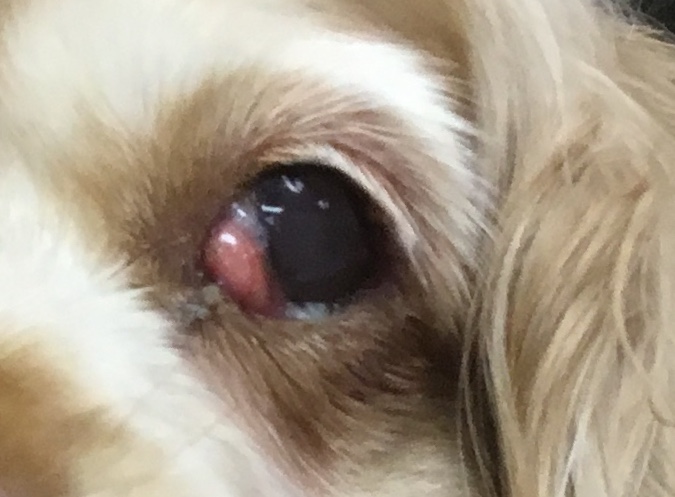
Cherry Eye
Cherry eye is the common name for a prolapsed gland of the third eyelid. The eyes contain a series of glands with the purpose of lubricating the eye. This continual flushing keeps the eye clean by rinsing off surface debris. One of the glands that helps keep the eye moist is the third eyelid gland (nictitating membrane). This gland sits below the eye and points towards the nose. It produces up to 50% of the eye’s tears.
The third eyelid gland is held in place by fibrous connective tissue. If the fibrous attachment is weak it predisposes the gland to prolapse, or simply, fall out of place. When the gland prolapses a red mass is seen protruding from the inner corner of the eye, hence the name cherry eye. One or both eyes may prolapse, and if it occurs in one eye the unaffected eye may prolapse later. In addition to the gland protruding, dogs may experience an overflow of tears onto the face, red eye, and/or eyelid spasms.
Certain breeds more prone to cherry eye include Beagles, English Bulldogs, Cocker Spaniels, and other purebred or mixed dogs with droopy eyes, such as hounds. If congenital in nature, prolapse usually occurs anywhere from 6 months to 2 years of age in dogs. The cause of cherry eyes in dogs over 2 years of age, may include trauma or even more serious – tumors that may be pushing the gland out of place.
Historically, the treatment for cherry eye involved surgically removing the prolapsed glands. This procedure was used before the full significance of the gland was realized. When surgically removed, dogs may be predisposed to develop keratoconjunctivitis sicca (dry eye) later in life. Today veterinarians prefer surgical correction. This procedure re-positions the gland into its normal position and is sutured in place. After surgery a topical anti-inflammatory and elizabethan collar are sent home. The collar prevents the patient from rubbing or scratching the eye, which can disrupt the sutures causing prolapse to reoccur and/or corneal ulcers.
Prognosis for dogs undergoing surgery is good, with only a 5-20% chance of relapse. Cherry eye can be scary in appearance, especially if you have never seen it, but it is not a medical emergency. Schedule an appointment with your veterinarian within a day or two.





Recent Comments